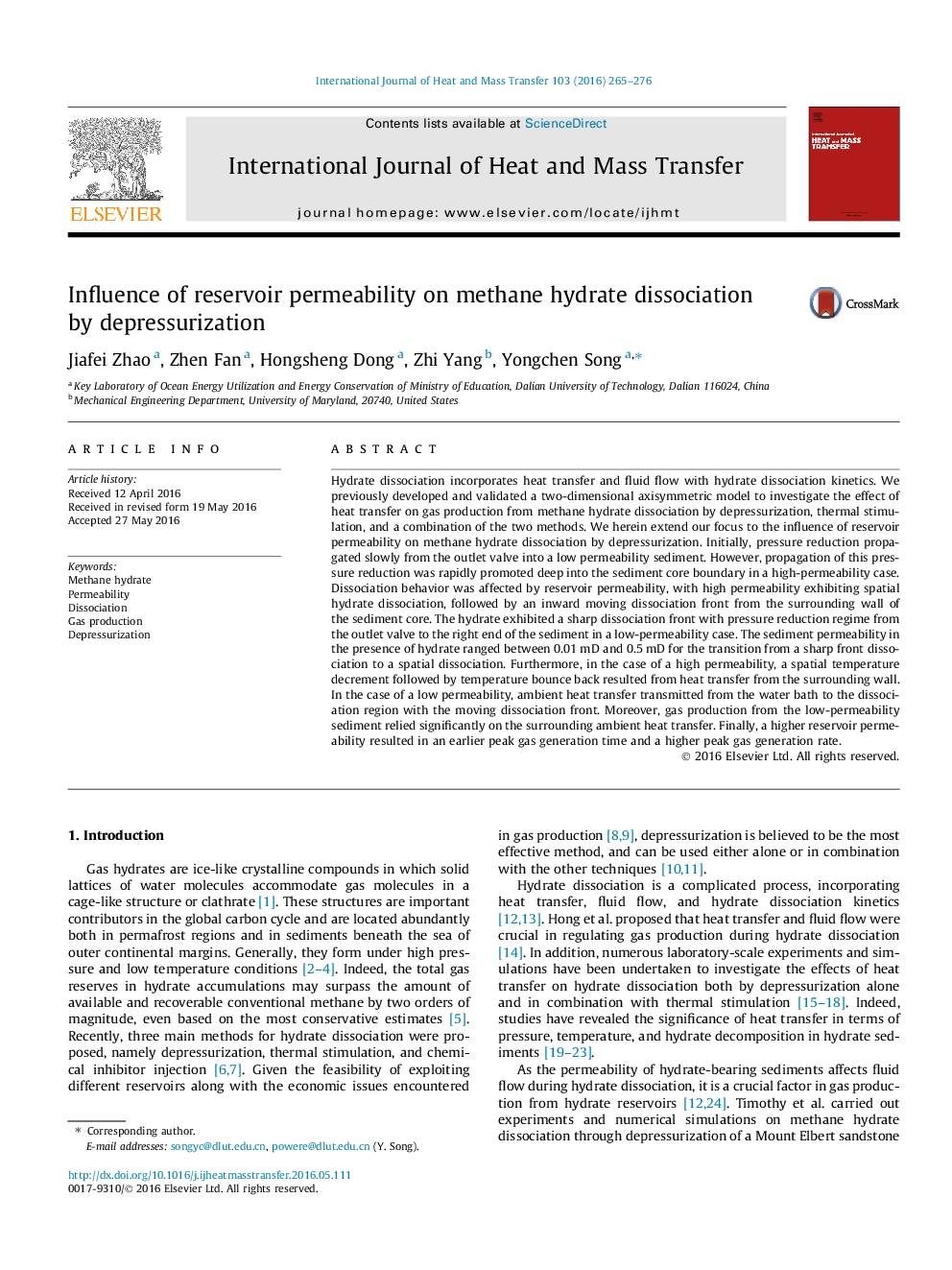| کد مقاله | کد نشریه | سال انتشار | مقاله انگلیسی | نسخه تمام متن |
|---|---|---|---|---|
| 7055009 | 1458039 | 2016 | 12 صفحه PDF | دانلود رایگان |
عنوان انگلیسی مقاله ISI
Influence of reservoir permeability on methane hydrate dissociation by depressurization
ترجمه فارسی عنوان
تأثیر نفوذ پذیری مخزن بر تفکیک هیدرات متان توسط کمپرسازی
دانلود مقاله + سفارش ترجمه
دانلود مقاله ISI انگلیسی
رایگان برای ایرانیان
کلمات کلیدی
هیدرات متان، نفوذپذیری، انحلال، تولید گاز، کاهش فشار،
موضوعات مرتبط
مهندسی و علوم پایه
مهندسی شیمی
جریان سیال و فرایندهای انتقال
چکیده انگلیسی
Hydrate dissociation incorporates heat transfer and fluid flow with hydrate dissociation kinetics. We previously developed and validated a two-dimensional axisymmetric model to investigate the effect of heat transfer on gas production from methane hydrate dissociation by depressurization, thermal stimulation, and a combination of the two methods. We herein extend our focus to the influence of reservoir permeability on methane hydrate dissociation by depressurization. Initially, pressure reduction propagated slowly from the outlet valve into a low permeability sediment. However, propagation of this pressure reduction was rapidly promoted deep into the sediment core boundary in a high-permeability case. Dissociation behavior was affected by reservoir permeability, with high permeability exhibiting spatial hydrate dissociation, followed by an inward moving dissociation front from the surrounding wall of the sediment core. The hydrate exhibited a sharp dissociation front with pressure reduction regime from the outlet valve to the right end of the sediment in a low-permeability case. The sediment permeability in the presence of hydrate ranged between 0.01Â mD and 0.5Â mD for the transition from a sharp front dissociation to a spatial dissociation. Furthermore, in the case of a high permeability, a spatial temperature decrement followed by temperature bounce back resulted from heat transfer from the surrounding wall. In the case of a low permeability, ambient heat transfer transmitted from the water bath to the dissociation region with the moving dissociation front. Moreover, gas production from the low-permeability sediment relied significantly on the surrounding ambient heat transfer. Finally, a higher reservoir permeability resulted in an earlier peak gas generation time and a higher peak gas generation rate.
ناشر
Database: Elsevier - ScienceDirect (ساینس دایرکت)
Journal: International Journal of Heat and Mass Transfer - Volume 103, December 2016, Pages 265-276
Journal: International Journal of Heat and Mass Transfer - Volume 103, December 2016, Pages 265-276
نویسندگان
Jiafei Zhao, Zhen Fan, Hongsheng Dong, Zhi Yang, Yongchen Song,
